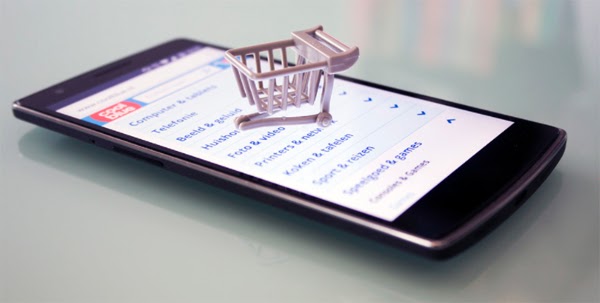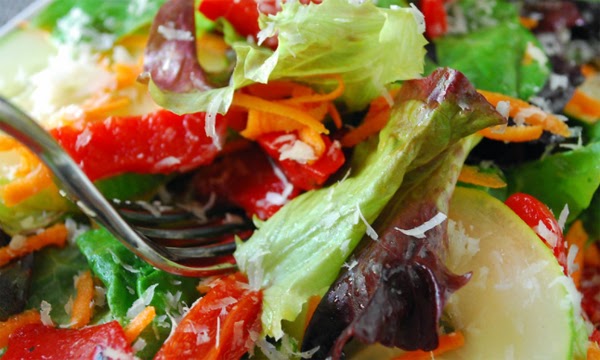Posted by MiriamEllis
“We are here to awaken from our illusion of separateness.” ― Thích Nhất Hạnh, Buddhist teacher
Image credit: Maulvi
My warm New Year’s greetings to all local business owners and local SEOs reading my column today. Add to this my sincere sentiments of solidarity for what we went through together in 2020 — we won’t soon forget it, and our stories from the journey contain important teachings for our market and industry.
I often find that the best local SEO takeaways sprout from the real-world anecdotes of colleagues and friends, and you’ll find those here today along with my personal predictions for the year ahead. Let’s get learning!
Teachings from the real lives of local SEOs
In a year when we were physically distant from one another in unprecedented ways, I’ve found memorable lessons in how local business owners broke down barriers to keep communities connected. I asked four wonderful colleagues to share a personal anecdote with me about a local business they transacted with, both prior to and during the pandemic. As you read these brief stories, see if you can identify six common threads running through them.

Amanda Jordan, Director of Local Search at LOCOMOTIVE Agency
“One of my favorite businesses that I have used before and during 2020 is Pete's Diner. I first found out about them by driving by, but they have been in the community for decades.
Before the pandemic, my husband and I would have breakfast with his parents every Saturday at a different local restaurant. It became one of our regular breakfast spots because their food is great and it's pretty close to our home. They also carried a hard-to-find, high-quality olive oil that we would buy in large quantities while we were there.
During the pandemic, we decided to do our best to continue to support local businesses. Pete's really has adapted to the current climate by offering online ordering and delivery without raising prices significantly or compromising on the quality of their food. Moving into 2021, I recommend that local businesses continue to offer delivery and online ordering even after the pandemic is over. Use Google Posts to keep customers up to date on specials or new services and products.”

John Vuong, Founder of Local SEO Search Inc.
“I discovered my favorite Vietnamese pho restaurant three years ago. I was on the hunt for something that was close to my home, was family-run, and that had an amazing Vietnamese bone broth noodle soup that would remind me of my childhood (my family immigrated to Canada from Vietnam).
Like many SEOs do, I found it through Google Search. I always check Google reviews to see what a company's online reputation is. The first time I stepped foot in their restaurant, they recognized that I was new. They took the time to explain their business and tell me their most popular dishes. They took the time to build a personal relationship and rapport with me by asking my name and sharing theirs. It felt like there was a real personal touch. And of course, the food was amazing, the service was quick, and they topped it all off with complimentary dessert. I was hooked!
I'd been going to this pho restaurant weekly — that is until the pandemic hit. I didn’t visit them for a little over three months when lockdown first went into effect. But when I did, I was so happy to see that they had implemented all of the necessary health precautions to make their customers and staff feel safe. I noticed a huge influx of takeout orders.
I think my best local marketing advice for 2021 would be to take care of your customers! Listen to them intently and go over and above what you typically would. Treat every single customer like they’re your family and they will feel the love! Don’t expect anything in return, and you will be rewarded when you least expect it!”

Niki Mosier, Head of SEO at Two Octobers
“There is a local cafe/coffee shop near me that I would frequent, especially for their homemade doughnut Fridays. The proximity of the location (two blocks away), the quality of the food, and the customer service made me a repeat customer.
The business was quick to offer delivery (even for two blocks away), which has been amazing — who doesn't want Irish coffee and fresh doughnuts delivered to their door on a Friday morning? They’ve added other fun takeaway options, too, like bake-your-own cookie dough, meals, and a Thanksgiving pie and beer collab with the brewery down the street. Think outside the box and don't be afraid to pivot. Focus on customer service and your customers will stay loyal.”

Garrett Sussman, Head of Marketing at Grade.us
“Some might argue that Wegmans, the northeast grocery chain, has a cult following. It's easy to understand why. I first discovered the store from my father. He raved about the way they had special baked goods, quality produce, and an assortment of branded products. I was living in New Jersey at the time, and I was hooked after my first visit. Maybe it was the takeout sandwiches, the fresh sushi, or the large and open layout of the store — and it didn't hurt that they were about five minutes from my apartment at the time.
Since then, I’ve learned more about the brand and appreciate their philosophy: ‘Employees first, customers second.' I want to go to a store that takes care of their employees. They've even invested $5 million dollars in employee scholarships. How cool is that?
In 2020, they adapted to the pandemic by being one of the first grocery stores to implement mask policies, glass splash guards, and social distancing. They increased their employees' wages in March by $2.00, and had hand sanitizer at entrances very early on. If I had to give them one piece of local search marketing advice, I'd recommend utilizing Google Posts more frequently. Adding a post once every couple of months is better than nothing, but it's such an opportunity to attract more customers to their grocery stores.”
6 common threads for 2021 local SEO strategy

Image credit: RJP
Did you spot the commonalities in the four stories? When I distill them down into local SEO themes, here’s what I see:
1. Essential local businesses take pride of place
When I asked for a story about a favorite business, Amanda, John, Niki, and Garrett all chose an essential business — a restaurant or grocery store that fed them! Eating is the most fundamental of all activities, as recent times have highlighted for us all. One of my major takeaways from 2020 that I’ll be bringing with me into 2021 is that operating an essential business which fulfills the basic structural needs of a community is the wisest entrepreneurial strategy.
If you’re adjusting your business model and its inventory, opening a new business this year, or advising local entrepreneurs, learn to map community essentials and create a business plan that puts basics before luxuries.
2. Local business discovery is multi-channel
Getting found is the preliminary step to every local business transaction:
- Amanda found a restaurant while driving
- John looked at Google listings and reviews
- Niki needed a spot in close proximity to her workplace
- Garrett heard by word-of-mouth from a family member
Being there for the customer means being discoverable both online and offline, via vehicle, foot traffic, web-based local business platforms, and by word-of-mouth recommendations. Your visibility strategy for the year ahead needs to cover all these bases.
3. Local businesses can deliver multiple types of value
The local businesses you’re marketing have the best chance of success if you can unlock the secret of what patrons value most. These examples abound in our four anecdotes:
- Great selection — Amanda’s olive oil, Garret’s baked goods, John’s pho, Niki’s Irish coffee.
- High quality — clearly, all of these foods are extra delicious!
- Convenience — everyone wanted something nearby.
- Brand affinity — John wants a family-owned business, Garret wants employees to be cared for, Niki likes businesses that partner up with one another, and Amanda likes a brand that maintains quality without raising prices too much.
- Brand adaptability — all four brands made safety adjustments to keep serving the public.
This year, find out what your customers and potential customers value most, and make common cause with them.
4. Pandemic adaptations drive loyalty
The four businesses our contributors highlighted are successfully weathering an incredible storm via the praiseworthy changes they made to keep serving the public safely, like:
- Implementing new sanitary policies
- Implementing digital commerce
- Offering home delivery
- Doubling down on takeout service
- Increasing employees’ wages
- Trying new things, like meal kits
- Forming new cross-sales partnerships with fellow businesses
Taking maximum safety precautions, delivering at the curb or the front door, facilitating online purchasing, and experimenting with new ideas are all must-haves for 2021.
5. There’s even more that good local brands can do
I asked our experts what they’d suggest if they could offer once piece of local SEO advice to their favorite businesses for 2021. They recommended:
- Maintaining all new sales and service channels, even after the hoped-for end of COVID-19.
- Making consistent use of Google Posts as a communications channel.
- Listening intently to evolving customer needs.
- Putting customer service at the center of everything.
- Making customers feel loved.
6. The most important local SEO factor is the human factor
These are the parts of the stories I like best, because they show businesses making us feel less alone, despite our necessary distancing.
- Amanda found a place a family feels so welcome, they made it a regular multi-generational hangout.
- Niki found a place that added a sense of fun to life with their creativity.
- John found a place that not only served a beloved dish from childhood, but where the staff took the time to build a personal relationship with him.
- Garrett found a place where he can feel good shopping because they take genuine care of their staff.
Philosopher Thích Nhất Hạnh might say that each of these businesses found a way to shatter the illusion of separateness, in the midst of a pandemic, by making each of these patrons feel like valued members of the community. Any local business you market in 2021 can definitely do the same.
My own local SEO predictions and tips for 2021
Here we go!
1. Your local business website will be more essential than in any previous year

Image credit: Robbert Noordjiz
It’s hard to believe that just three years ago, I felt compelled to publish a piece on why you still needed a website, pushing back on the narrative that the amount of zero-click-type SERPs was making websites irrelevant. Nobody can claim this in 2021, and recent stats from Moxtra’s Small Business Digital Resilience Report make the “why” of this clear. Consider:
- 66% of respondents say the pandemic made them more likely to do business with SMBs in the future (and I’ve seen higher numbers than this in other surveys).
- But, 2020 saw 30% growth in consumers requiring that digital capabilities be present to facilitate transactions (think e-commerce and telemeetings).
- And, 84% said if these capabilities were lacking, they’d consider looking elsewhere for a brand that could serve them online (84% is a huge number!).
Local digital sales are where it’s at in 2021, so finding the best possible e-commerce provider should be the top priority for all relevant brands. Don’t worry too much about zero-click SERPs this year. Yes, Google has its shopping engine and has even ramped up its “nearby” filter in 2020, but focus on pulling in every bit of traffic you can to your website’s own shopping cart this year. This goal will build stronger-than-ever bridges between local and organic SEO, so this is the time for local-focused agencies to double down on organic skills.
I’m also watching with interest the rise of medical devices and apps that monitor heart rate, blood pressure, and other vitals. There’s a telemedicine revolution going on, which should seep into other professional services that could improve customer convenience via secure telemeetings, any time face-to-face appointments aren’t essential.
Has anyone ever really enjoyed sitting for hours in a waiting room to speak to an accountant, a consultant, a banker? I don’t think so. In 2021, websites for professional service providers should be optimized to drive online bookings for as many remote meetings as possible.
2. The triumphant return of the milkman and the everything-delivery person!

I’ve been predicting the return of the milkman for many years here at Moz, and 2020 made it happen. Thousands of customers signed up this past summer to make standing orders with Alpenrose Dairy in the Portland area, after a 40-year absence of home delivery service. Under new leadership, the old dairy invested in a fleet of trucks, drivers, branded delivery boxes, and even dog biscuits to toss to barking pups along the way. As their success grew, Alpenrose began partnering up with other local brands to deliver all kinds of treats and groceries, and their social profiles are being rewarded with nostalgic, happy praise from locals and a ton of transactions.
What I find absolutely key to this story is that Alpenrose is managing delivery in-house. They aren’t outsourcing to a third party and losing something like one-third of their revenue. If a local business you’re marketing can deliver, it definitely should.
Further, I’d urge digital marketing agencies to have vital conversations with clients in Q1 about the problems inherent in outsourcing customer experience to a third party. As I’ve learned from both restaurateurs and grocers, it’s generally too costly and too risky to let another company get between you and your customers. This means that a key problem to solve in the year ahead is the employment and transportation of in-house drivers.
“Oyster man. Oyster manny-manny-manny!”
A vintage cookbook tells me this is the song residents of mid-century New Orleans heard each day as a seafood wagon came down their streets. When I look through and beyond 2021, my best inspiration comes from examining the past, with its bountiful produce trucks making rounds, and ladies coming onto porches to purvey gumbo file powder. Ask your elders for reminiscences to inspire 2021 opportunities, because everything old is becoming new again, and whenever I ask around, customers who have gotten a taste of home delivery want it to continue beyond the hoped-for end of the pandemic.
But here’s one problem I need help to solve: If I’m predicting the continued expansion of delivery, and I’m looking back in time, I see lots of households with somebody available to accept perishable orders. In June of 2020, 42% of the US workforce was working at home, but if and when we return to formal workplaces, who will be in situ to bring in the meat and dairy before they spoil?
Will the return of the milkman necessitate the return of the outdoor icebox, or at least some form of it, like a fridge on the porch, a cooler the driver knows to fill, an apartment complex cold case? Inventors, please speak up, because there’s just no way I’m going to let Amazon into my house.
3. My tossed salad of local search marketing predictions

Image credit: Slice of Chic
So, solving for local digital sales and delivery are the two biggest stories I’m focused on in the year ahead, but here are my mixed greens of other developments I think we’ll see in the next twelve months:
1. Google’s Core Web Vitals is coming, and it will be felt on local business shores. But the truth is that — as recently as 2019 — one-third of small businesses still reported having no website at all (hence, nothing to optimize for Google’s latest initiatives). While local SERPs make it clear that it’s quite possible to rank a site-less local business in even moderately competitive packs and finders, 2020 turned the lack of a digital presence into a dire disadvantage for the smallest brands. Even a free website will be better than nothing in the year ahead.
2. Google will push harder on Google Messaging, and brands and agencies will need to decide whether to invite them into customer communications to this degree. If Google Messaging ever fully takes off, I wouldn’t be surprised to see Google sunset Questions & Answers as a result.
3. Google’s purchase of Pointy should start to surface more clearly as key to their strategy for a local transactional future. I strongly believe Google’s greatest growth potential lies in facilitating local online shopping through a mapped interface, and I’m expecting their game plan for this to be more obvious by the end of 2021.
4. Reviews will continue to be absolutely central, but unless Google does something more about vetting the quality of reviews and Q&A responses from its Local Guides program, searcher experience will suffer. We won’t see a massive erosion of trust to threaten Google’s review dominance in 2021, but review spam and poor content will continue the confidence leak at a slow, aggravating trickle unless Google plugs it up.
5. If Apple launches its search engine this year, the local SEO industry’s necessary hyper-focus on Google could see some welcome variation. Moz Local already distributes to Apple Maps, so if you’re a customer, you’re ahead of the Apple game, but coverage of optimizing for Apple search will deserve your closest attention to be an early bird.
6. The rise of Nextdoor for local business visibility will hit a new high, and hopefully prompt the company to start developing more agency-friendly solutions. Nextdoor is the structured citation platform in which I’m most interested for the new year, and Moz Local now offers a top tier plan with a solution for agencies to help get all their clients onto Nextdoor (a function that’s absent from the platform’s own interface). Watch the Moz Blog for further coverage this year!
7. Local medical and personal service providers may need to expand hires (at least temporarily). Once a truly successful COVID-19 vaccine has been widely implemented, expect a glut of bookings from clients who have put off all kinds of appointments during lockdown. Now is the time to investigate good booking software and also evaluate Google’s options for this, because online reputation will be impacted by the ability to see clients in a timely manner once it’s safe to do so.
8. Public-brand affinity will set conscientious local businesses apart. Centering deep concern for whatever your local public cares about most will be increasingly important in the coming year. Whether through brand activism or allyship with major movements like Black Lives Matter or climate change addressal, or diligent support of local programs to alleviate poverty or increase diversity, equity, and inclusion, company reputations will become further tied to actions for the common good.
In summary
I’ll sum up by saying that there’s never been a tougher year than 2021 for making marketing predictions. After all, how many of us foresaw the harsh realities of 2020? But, as I look to the sunrise of a vaccine, and couple this with multiple polls indicating just how strongly the public wants to support local businesses, I think there’s both reason for optimism and genuine opportunity ahead.
2020 reminded us of just how interdependent we all are, for the basics of daily living and for human support, encouragement, and hope. Everyone benefits from inhabiting well-resourced, sustainable communities and if your brand or agency can help with this, the future belongs to you.
Sign up for The Moz Top 10, a semimonthly mailer updating you on the top ten hottest pieces of SEO news, tips, and rad links uncovered by the Moz team. Think of it as your exclusive digest of stuff you don't have time to hunt down but want to read!
![]()


Recent Comments